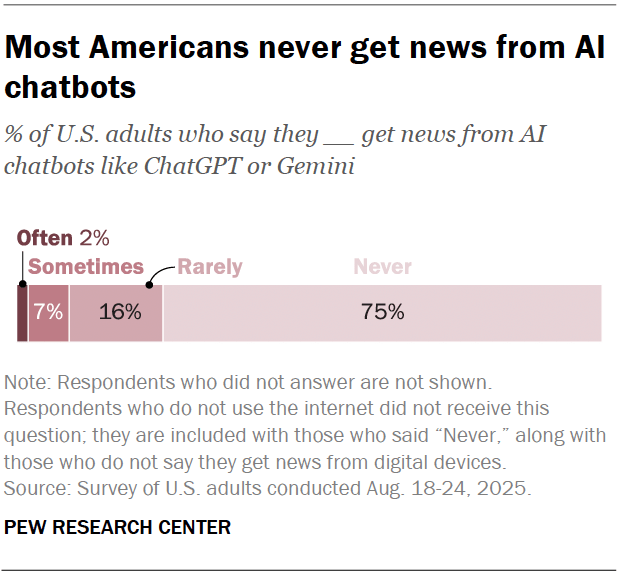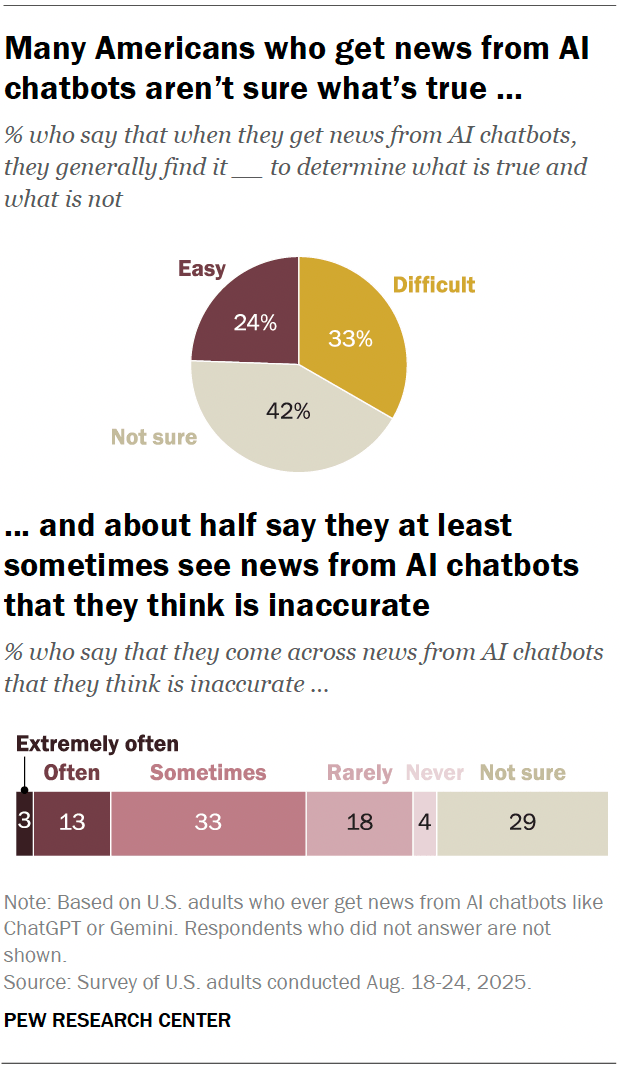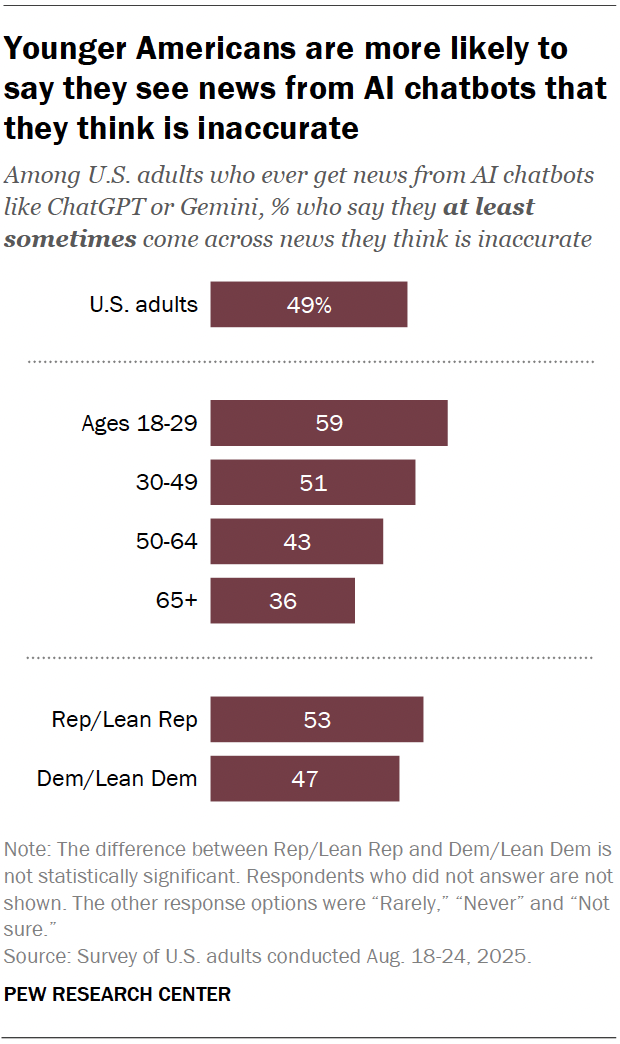A growing share of Americans are using artificial intelligence chatbots like ChatGPT. But chatbots have not become a regular source of news for most Americans.

About one-in-ten U.S. adults say they get news often (2%) or sometimes (7%) from AI chatbots like ChatGPT or Gemini. An additional 16% do so rarely, according to a recent Pew Research Center survey. Most Americans (75%) say they never get news this way.
In addition, fewer than 1% of Americans say they prefer to get news from chatbots rather than from other sources of news.
Related: Americans largely foresee AI having negative effects on news, journalists
Adults under 50 are slightly more likely than older Americans to get news at least sometimes from AI chatbots (12% vs. 6%). However, there are much larger age differences when it comes to overall chatbot use.

Americans who get news from AI chatbots have mixed experiences with the news they get there – particularly when it comes to perceptions of its quality.
A third of those who use chatbots for news say they generally find it difficult to determine what is true and what is not. About a quarter (24%) say they find it easy to do so. But the largest share (42%) isn’t sure.
Meanwhile, about half of adults who get news from AI chatbots say they at least sometimes come across news there that they think is inaccurate. That includes 16% who say they see this extremely often or often. Another 22% say they rarely or never see inaccurate news on chatbots, while 29% aren’t sure.

While younger adults are more likely than older adults to use chatbots in general, they are also more likely to say they see inaccurate news there.
Among Americans who get news from AI chatbots, 59% of adults ages 18 to 29 and 51% of those 30 to 49 say they at least sometimes see news on chatbots they think is inaccurate. By contrast, 43% of those 50 to 64 and 36% of those 65 and older say the same.
Unlike with age, there are no major differences on this question by political party or education level.
Note: Here are the questions used for this analysis, the topline and the methodology.

